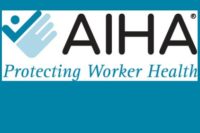The Occupational Safety and Health Act of 1970 is one of the surviving monuments of the era of progressive social legislation (extending from the mid-1960s through the mid-1970s) during which Congress enacted the nation’s foundational health, safety and environmental laws. That statute empowered the Occupational Safety and Health Administration (OSHA) to write safety and health standards designed “to assure so far as possible every working man and woman in the Nation safe and healthful working conditions.” A separate “general duty clause” required every employer to provide a workplace that was “free from recognized hazards” that were likely to cause “death or serious physical harm.”
During the ensuing four decades, OSHA’s efforts to implement that statute have brought about substantial reductions in workplace injuries and illnesses, but far too many workers are still hurt or killed.
According to the Bureau of Labor Statistics, U.S. private sector employers in 2010 reported nearly 2.9 million injuries and around 200,000 workplace illnesses. The actual numbers are likely much higher because some employers underreport workplace injuries, and doctors frequently fail to inquire into the likelihood that particular diseases, like cancer, have a workplace origin. A total of 4,690 workers died on the job, which represents a fatality rate of about 3.6 deaths per 100,000 full-time employees. These rates declined slightly during the recession of 2009, but were on their way back up in 2010
The sad fact of occupational life in the United States is that OSHA has not lived up to its potential, primarily because for the 30 of the past 40 years, OSHA has been the subject of unrelenting attacks by the business community. These attacks have rendered OSHA largely incapable of promulgating new occupational safety and health standards and only barely able to enforce existing standards the general duty clause. In 2010, the Center for Progressive Reform published a report detailing serious regulatory dysfunction in OSHA due primarily to a lack of resources, a weakened regulatory process, intrusive review by the White House, and an outmoded statute.
Today we publish The Next OSHA: Progressive Reforms to Empower Workers, offering a wide variety of suggestions for how Congress, OSHA, and workers themselves can make the nation’s workplaces safer and healthier. I co-authored the report with fellow CPR Member Scholars Martha McCluskey, Sidney Shapiro and Rena Steinzor, and CPR Senior Policy Analyst Matthew Shudtz.
Starting with the workers, the report urges OSHA to exercise its power under the general duty clause to require employers to educate workers about the hazards that they face in their jobs and to train them in how to avoid those hazards. Invoking the 40-year experience with citizen enforcement actions under the primary environmental statutes, the report urges Congress to amend the Act to allow workers to commence a legal action in federal court to enforce OSHA standards. When it comes to health and safety, workers should not have to rely on an underfunded agency or potentially unenthusiastic state inspectors to redress current dangers.
When OSHA does attempt to punish serious violations of its standards and the general duty clause, it often finds itself stymied by ridiculously low penalties that have no real potential to affect the conduct of large corporations. For example, an employer who willfully violates an OSHA standard and causes a worker’s death is guilty of a Class B misdemeanor, which carries a maximum of six months in jail, about the same as the penalty for digging up wild ginseng roots in a national park. The report urges Congress to amend the law to provide for much stiffer penalties that reflect the sanctity of human life.
Our report also recommends that OSHA establish a presumption in favor of filing criminal charges against any willful violator of an OSHA standard when the violation results in the death of a worker. And OSHA and the Justice Department should invoke the responsible corporate officer doctrine under which courts hold high-level corporate officials criminally liable for the company’s violations of public health and welfare statutes when they were or should have been aware of those violations.
For lesser violations, the report calls on Congress to authorize OSHA inspectors to issue administrative compliance orders requiring employers to rectify problem as they find them. And it should dramatically increase the civil fines that OSHA may levy when it finds serious violations of the standards or the general duty clause. Right now, the maximum penalty is $7,000 and the average assessment is only $2,100. Such paltry fines are not nearly weighty enough to catch the attention of upper level management.
Congress also needs to attend to some of OSHA’s pressing institutional needs, including its chronic shortage of resources. The agency should be authorized to charge user fees for access to its Voluntary Protection Program and other similar programs that the agency now offers as a public service to employers. In addition, OSHA needs to reorder its priorities to put at least as many resources into employee education and training as it devotes to assisting employers in complying with law.
The report contains a number of other proposals for improving OSHA oversight of state occupational safety and health plans, making the appeals process less cumbersome in enforcement cases, and a new generation of rulemaking initiatives that, among other things, employs a hierarchy of hazard-based controls to make the rulemaking process more efficient.
These are long-term recommendations, and I am under no illusions that a Congress like today’s will move them. During the past 18 months, the House leadership has demonstrated that it would rather eliminate OSHA than provide much-needed protections for American workers.
Unfortunately, it also appears that the political operatives in the White House Office of Management and Budget have decided to hunker down for the remainder of this election year and issue no new regulations that might attract attacks from the business community and its allies in Congress and the conservative media echo chamber. Therefore, likelihood of changes emanating from OSHA right now is also quite low.
This sad state of the world highlights the importance of the upcoming and future elections. The politics will obviously need to shift dramatically before reforms like these can be enacted. Sadly, this will probably require more highly publicized tragedies to impress upon the public the consequences of a world without effective regulation. The time will come when public demands for more workplace protections can no longer be ignored. And when it does, the suggestions in this paper will provide a useful roadmap for progressive reform of occupational safety and health regulation.




